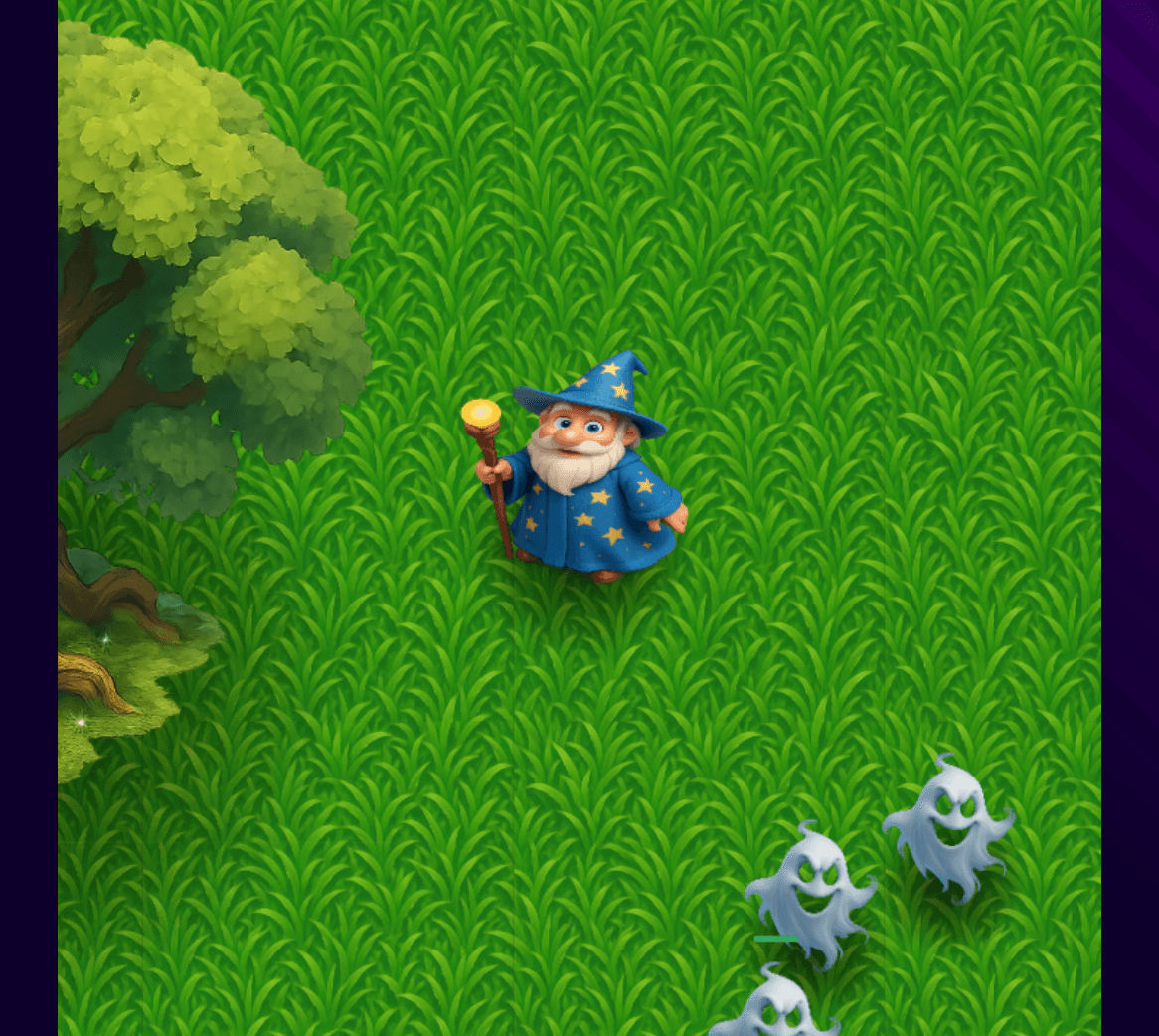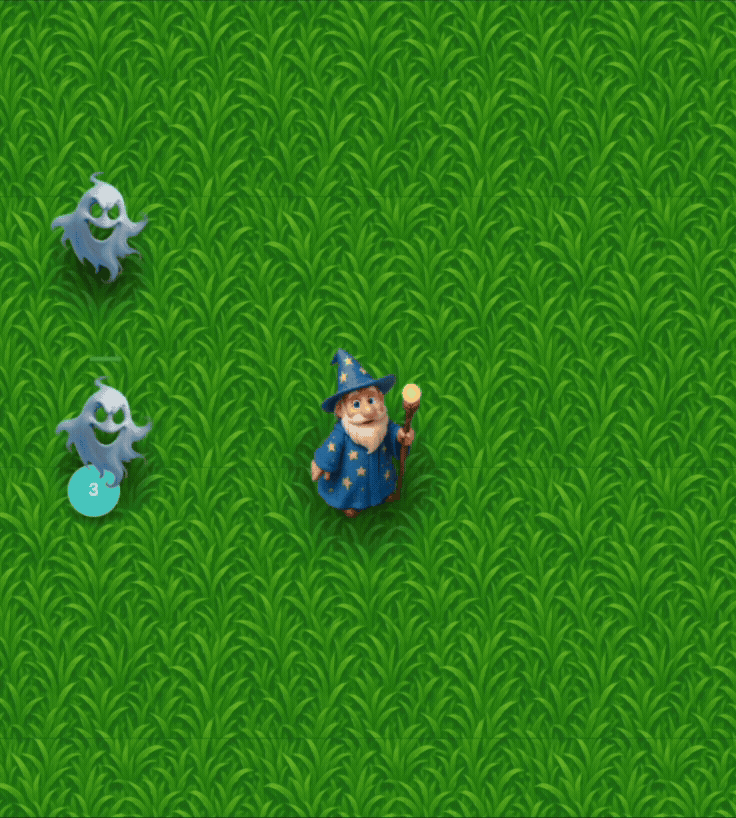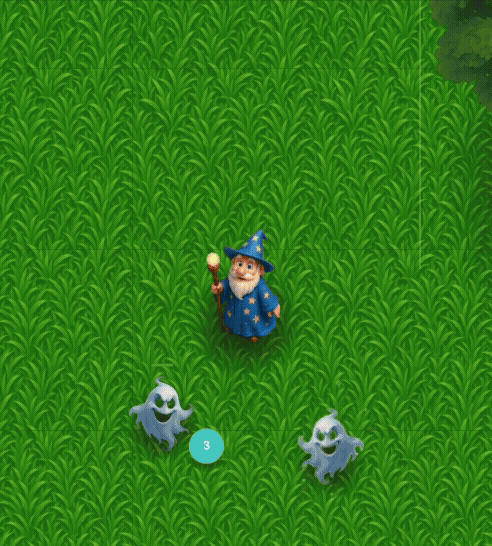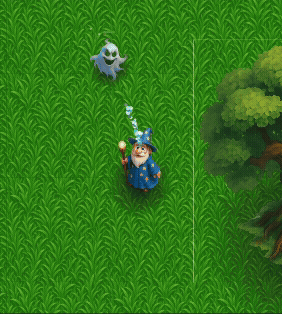How to Make Your Games Shine ✨ on Astrocade
By Astrocade
September 20th, 2025
Creating games on Astrocade is as easy as making a wish — but if you stop there, your game may look rough or unfinished. The real magic happens when you refine that first version into something polished, fun, and professional with additional wishes.
In this tutorial, we'll walk through the process of taking a simple "creation wish" and improving it step by step. By the end, you'll know the key techniques to turn any raw prototype into a game you're proud to share.
Starting With a Simple Wish
Here's an example of a game wish that kicks things off:
Make a scrolling top-down game where I'm a wizard exploring a forest. Ghosts attack me, and I can shoot magical bolts to destroy them. When destroyed, ghosts drop rubies I can collect. The art style should look Pixar-3D, and I can take five hits before I die. The goal is to collect ten rubies.
Astrocade instantly generates a playable game. But while the basics are there, it's usually just the starting point. Now let's refine!
1. Fixing Backgrounds and Foregrounds
The first thing you'll often notice is mismatched backgrounds. If your game is top-down, the background should be the ground, not an unrelated forest image. Use a tiling texture so your world scrolls smoothly without seams.
Wish example:
Replace the background image with a tiling grass texture.
2. Improving Proportions and Use of Space
Tiny characters or oversized scenery can make a game feel amateurish. Don't be afraid to scale things up.
- Wizard and ghosts → 3x bigger
- Trees → 5x bigger
- Collectables and projectiles → 3x bigger
Wish example:
Make the wizard, ghosts, rubies, and magical bolts 3x bigger.
Make the trees 5x bigger.
3. Fixing Orientation and Scrolling
Two common issues:
- Characters rotating unnaturally when moving
- Background scrolling at a different speed than objects
Wish example:
The grass should scroll at the exact same speed as the trees, and the player should not rotate as they move.
Flip the character sprite when moving right, and flip back when moving left.
4. Boosting Realism With Shadows
Drop shadows instantly make objects feel grounded. Place them beneath objects but above the background for realism.
Wish example:
Every object and character should have a soft circular drop shadow,
1.25x the object's width, with a gradient fade to transparency.

Much better! Our objects appear to reasonably grounded. There’s still much more refinement that could be done, but this is close to something that feels complete.
5. Fixing Aspect Ratios
Sometimes assets appear stretched or squashed. Always keep proportions consistent.
Wish example:
Ensure the wizard is scaled proportionately, with no squashing or stretching.
6. Adding Life to Characters
Wizard Movement
Since full walk cycles aren't available yet, simulate motion with subtle animation:
Whenever the wizard moves, he should bounce up and down slightly.
Ghost Hovering
Make ghosts float creepily:
Ghosts should hover smoothly up and down, flipping horizontally when moving sideways.
Their shadows should stay planted.

Not bad, huh? No one’s going to confuse this for true walking, but the wizard immediately feels more “alive.”
7. Special Effects for Attacks and Enemies
Magical Bolts
Replace static sprites with particle effects for a magical feel.
The wizard should fire a blue particle system with glowing trails instead of a static sprite.
Enemy Deaths
Ghosts shouldn't just vanish—make them explode with flair.
When a ghost is destroyed, spawn a burst of particles, shake the screen,
and scale the ghost sprite to 200% while fading out.
8. Making Collectables Appealing
Rubies should be exciting to grab:
Rubies should scale up with a "bounce-in" effect,
pulsate smoothly, shimmer, and spawn particles when collected.

Here’s what all three of the above wishes look like applied at once. Notice the way the player expands and glows when firing, the way they take damage when hurt, and the way the ghosts appear in a more magical, elaborate way.
9. Events and Transitions
Polished games give feedback for every event:
- Player attacks → wizard glows and enlarges
- Player takes damage → screen flashes red, player shakes & is pushed back
- New enemies spawn → scaling & glowing effects simulate magical teleportation
10. Layering and Collisions
Tweak hitboxes for natural interactions. For example, trees should only block the trunk, not the whole canopy.
The tree's hit box should only cover the bottom 40% and center 60% of the texture.
Also, use z-sorting so objects lower on the screen overlap those above them.
11. General Tips
- Use "bounce-in" transitions to make objects appear with style.
- Iterate in small steps. If a wish doesn't feel right, refine it with precise tweaks (e.g., "3x the knockback effect").
- Don't overdo effects—balance polish with playability.
Before and After
The difference refinement makes is dramatic. What starts as a functional prototype transforms into a polished, professional experience that feels complete and engaging.


Check out the final version!
Start polishing your games on Astrocade
Astrocade makes game creation fast, but polishing is where your creativity shines. By refining backgrounds, proportions, animations, effects, and events, you can transform a simple wish into a polished, professional game.
Try these steps on your next project, experiment with your own ideas, and share your creations with the world!